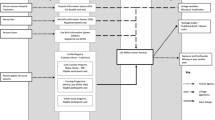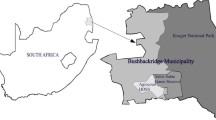Abstract
Validated population-based data on the occurrence of coronary heart disease in Finland have previously been obtained from myocardial infarction (MI) registers. Such registers cannot, however, cover large areas. Therefore, the Finnish Cardiovascular Diseases Registers (CVDR) Project was set up to obtain data for the whole of Finland. The CVDR Project is based on routine mortality and morbidity data linkage. We report here the overall approach used in the project, the results of the feasibility study and the first main results. In Finland, data on all hospitalizations are registered in the nationwide Hospital Discharge Register. Also, data on all deaths are collected in the nationwide Causes of Death Register. The unique personal identification number assigned to all persons residing in Finland was used for data linkage. Data have been validated using the FINMONICA MI registers. Sensitivity analyses showed that the data were robust and consistent between different geographical areas. Coronary heart disease (CHD) mortality as well as the incidence and event rates showed the same very clear geographical pattern, dividing Finland to a southwest area with a lower occurrence and a northeast area with nearly twice higher occurrence. Case fatality did not differ much between the areas and did not follow this Southwest–Northeast division. The differences between northeast and southwest Finland may be related to differences in risk factor levels but also to socioeconomic and genetic differences. The CVDR Project data will be instrumental in further research addressing these issues.
Similar content being viewed by others
References
Chambless L, Keil U, Dobson A, et al. for the WHO MONICA Project. Population versus clinical view of case fatality from acute coronary heart disease. Results from the WHO MONICA Project 1985-1990. Circulation 1997; 96: 3849-3859.
Tunstall Pedoe H, Kuulasmaa K, Amouyel P, Arveiler D, Rajakangas A-M, Pajak A, for the WHO MONICA Project. Myocardial infarction and coronary deaths in the World Health Organization MONICA Project. Registration Procedures, event rates and case fatality in 38 populations from 21 countries in 4 continents. Circulation 1994; 90: 583-612.
Tunstall-Pedoe H, Kuulasmaa K, Mähönen M, Tolonen H, Ruokokoski E, Amouyel P, for the WHO MONICA (monitoring trends and determinants in cardiovascular disease) Project. Contribution of trends in survival and coronary-event rates to changes in coronary heart disease mortality: 10-year results from 37 MONICA populations. Lancet 1999; 353: 1547-1557.
WHO MONICA Project, prepared by High Tunstall-Pedoe the World Health Organization MONICA Project (monitoring trend and determinants in cardiovascular disease): A major international collaboration. J Clin Epidemiol 1988; 41: 105-114.
Mähönen M, Salomaa V, Brommels M, et al. The validity of hospital discharge register data on coronary heart disease in Finland. Eur J Epidemiol 1997; 13: 403-415.
Mähönen M, Salomaa V, Torppa J, et al. The validity of routine mortality statistics on coronary heart disease in Finland. J Clin Epidemiol 1999; 52: 157-166.
Rapola JM, Virtamo J, Korhonen P, et al. Validity of diagnoses of major coronary events in national registers of hospital diagnoses and deaths in Finland. Eur J Epidemiol 1997; 13: 133-138.
Keskimäki I, Aro S. Accuracy of data on diagnoses, procedures and accidents in the Finnish Hospital Discharge Register. Int J Health Sci 1991; 2: 15-21.
Heliövaara M, Reunanen A, Aromaa A, Knekt P, Aho K, Suhonen O. Validity of hospital discharge data in a prospective epidemiological study on stroke and myocardial infarction. Acta Med Scand 1984; 216: 309-315.
Mähönen M, Miettinen H, Pyörälä K, Molarius A, Salomaa V, Kuulasmaa K, for the FINMONCA AMI Register Study Team. Hospital discharge register data in the assessment of trends in acute myocardial infarction. Ann Med 1995; 27: 547-554.
Pietilä K, Tenkanen L, Mänttäri M, Manninen V. How to define coronary heart disease in register-based follow-up studies: Experience from Helsinki Heart Study. Ann Med 1997; 29: 253-259.
Pyörälä K, Salonen JT, Valkonen T. Trends in coronary heart disease mortality and morbidity and related factors in Finland. Cardiology 1985; 72: 35-51.
Valkonen T. Male mortality from ischaemic heart disease in Finland: relation to region of birth and region of residence. European Journal of Population 1987; 3: 61-83.
Salomaa V, Miettinen H, Kuulasmaa K, et al. Decline in coronary heart disease mortality in Finland during 1983 to 1992: Roles of incidence, recurrence, and case-fatality. The FINMONICA MI register study. Circulation 1996; 94: 3130-3137.
Salomaa V, Moltchanov V, Keskimäki I, Mähönen M, Hämäläinen H, Reunanen A. The occurrence of coronary heart disease and stroke in Finland (update March 1999). Available in URL: http://www.ktl.fi/cvdr/findexsf.htm.
Katila M, Halinen M (eds). Sepelvaltimotaudin hoitosuositus 1992 (The treatment of coronary heart disease: Includes discussion about diagnostic criteria and ICD codes). Suomen Lääkärilehti 1992; 47: 1409-1493.
Waterhouse J, Muir CS, Correa P, Powel J (eds). Cancer incidence in five continents. IARC, Lyon, 1976; 456.
Palomäki P, Miettinen H, Mustaniemi H, et al. Diagnosis of acute myocardial infarction by MONICA and INMONICA diagnostic criteria in comparison with hospital discharge diagnosis. J Clin Epidemiol 1994; 47: 659-666.
Koukkunen H, Penttilä K, Kemppainen A, et al. Troponin T and creatinine kinase isoenzyme MB mass in the diagnosis of myocardial infarction. Ann Med 1998; 30: 488-498.
Hammar N, Ahlbom A, Theorell T. Geographical differences in myocardial infarction incidence in eight Swedish counties, 1976-1981. Epidemiology 1992; 3: 348-355.
The Nova-Scotia-Saskatchewan cardiovascular disease epidemiology group. Trends in incidence and mortality from acute myocardial infarction in Nova Scotia and Saskatchewan 1974 to 1985. Can J Cardiol 1992; 8: 253-258.
Hammar N, Larsen FF, Sandberg E, Alfredsson L, Theorell L. Time trends in survival from myocardial infarction in Stockholm County 1976-1984. Int J Epidemiol 1992; 21: 1090-1096.
Osler M, Sorensen TI, Sorensen S, et al. Trends in mortality, incidence and case fatality of ischaemic heart disease in Denmark, 1982-1992. Int J Epidemiol 1996; 25: 1154-1161.
Häkkinen U, Keskimäki I, Asikainen K. Determinants and consequences of technological change in the care of acute myocardial infarction patients in Finland. In: McClellan M, Kessler DP (eds). A global analysis of technological change in health care: the case of heart attack. University of Michigan Press, 2000 (In press).
De Henauw S, de Smet P, Aelvoet W, Kornitzer M, De Backer G. Misclassification of coronary heart disease in mortality statistics. Evidence from the WHO MONICA Ghent-Charleroi study in Belgium. J Epidemiol Community Health 1998; 52: 513-519.
Lloyd-Jones DM, Martin DO, Larson MG, Levy D. Accuracy of death certificates for coding coronary heart disease as the cause of death. Ann Intern Med 1998; 129: 1020-1026.
Zhao D, Goff DC, Herrera C, et al. Evaluation of the accuracy of coronary heart disease coding on death certificates: The Corpus Christi Heart Project. CVD Prevention 1998; 1: 48-54.
Juel K, Sjùl A. Decline in mortality from heart disease in Denmark: Some methodological problems. J Clin Epidemiol 1995; 48: 467-472.
McIlwaine WJ, Donnelly MD, Chivers AT, Evans AE, Elwood JH. Certification of death from ischaemic heart disease in Belfast. Int J Epidemiol 1985; 14: 560-565.
Martin CA, Hobbs MS, Armstrong BK. Estimation of myocardial infarction mortality from routinely collected data in western Australia. J Chronic Dis 1987; 40: 661-669.
Boyle CA, Dobson AJ. The accuracy of hospital records and death certificates for acute myocardial infarction. Aust N Z J Med 1995; 25: 316-323.
Beaglehole R, Stewart AW, Walker P. Validation of coronary heart disease hospital discharge data. Aust N Z J Med 1987; 17: 43-46.
Van Walraven C, Wang B, Ugant AM, Naylor CD. False-positive coding for acute myocardial infarction on hospital discharge records: Chart audit results from a tertiary centre. Can J Cardiol 1990; 6: 383-386.
Pladevall M, Goff DC, Nichaman MZ, et al. An assessment of the validity of ICD code 410 to identify hospital admissions for myocardial infarction: The Corpus Christi Heart Project. Int J Epidemiol 1996; 25: 948-952.
Martin CA, Hobbs MS, Armstrong BK. Identification of non-fatal myocardial infarction through hospital discharge data in Western Australia. J Chronic Dis 1987; 40: 1111-1120.
Bluhm G, Hammar N, Alfredsson L, Pershagen G. Could time trends in myocardial infarction incidence be due to diagnostic inconsistency? A study of the validity of hospital discharge diagnoses. J Int Med 1998; 244: 357-358.
Burnand B, Feinstein AR. The role of diagnostic inconsistency in changing rates of occurrence for coronary heart disease. J Clin Epidemiol 1992; 45: 929-940.
Forsén T, Eriksson JG, Tuomilehto J, Teramo K, Osmond C, Barker DJP. Mother's weight in pregnancy and coronary heart disease in a cohort of Finnish men: Follow-up study. BMJ 1997; 315: 837-840.
Eriksson JG, Forsén T, Tuomilehto J, Winter PD, Osmond C, Barker DJP. Catch-up growth in childhood and death from coronary heart disease: Longitudinal study. BMJ 1999; 318: 427-431.
Whisnant JP, Melton LJ (eds). The compression of morbidity hypothesis: Promise and pitfalls of using record-linked data bases to assess secular trends in morbidity and mortality. Milbank Q 1992; 70: 127-154. Review.
Author information
Authors and Affiliations
Rights and permissions
About this article
Cite this article
Mähönen, M., Salomaa, V., Keskimäki, I. et al. The feasibility of routine mortality and morbidity register data linkage to study the occurrence of acute coronary heart disease events in Finland. Eur J Epidemiol 16, 701–711 (2000). https://doi.org/10.1023/A:1026599805969
Issue Date:
DOI: https://doi.org/10.1023/A:1026599805969




